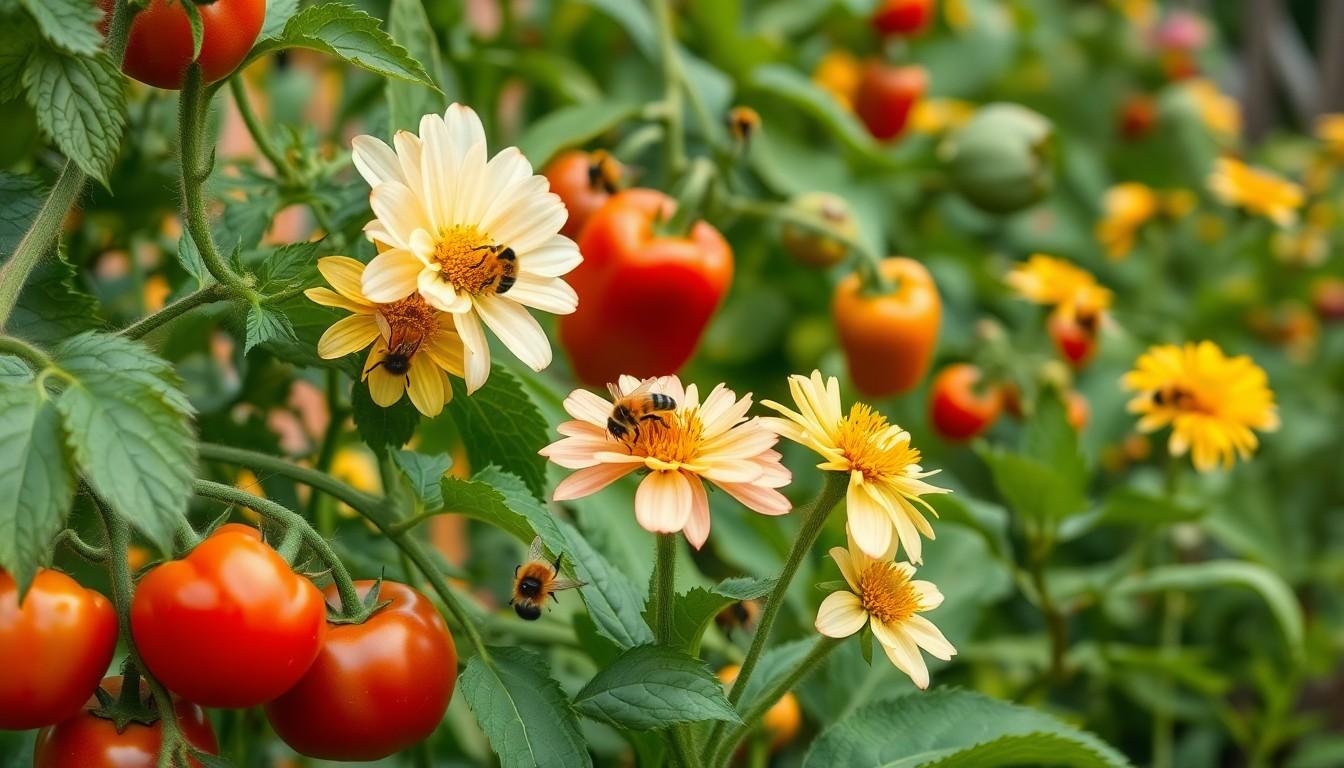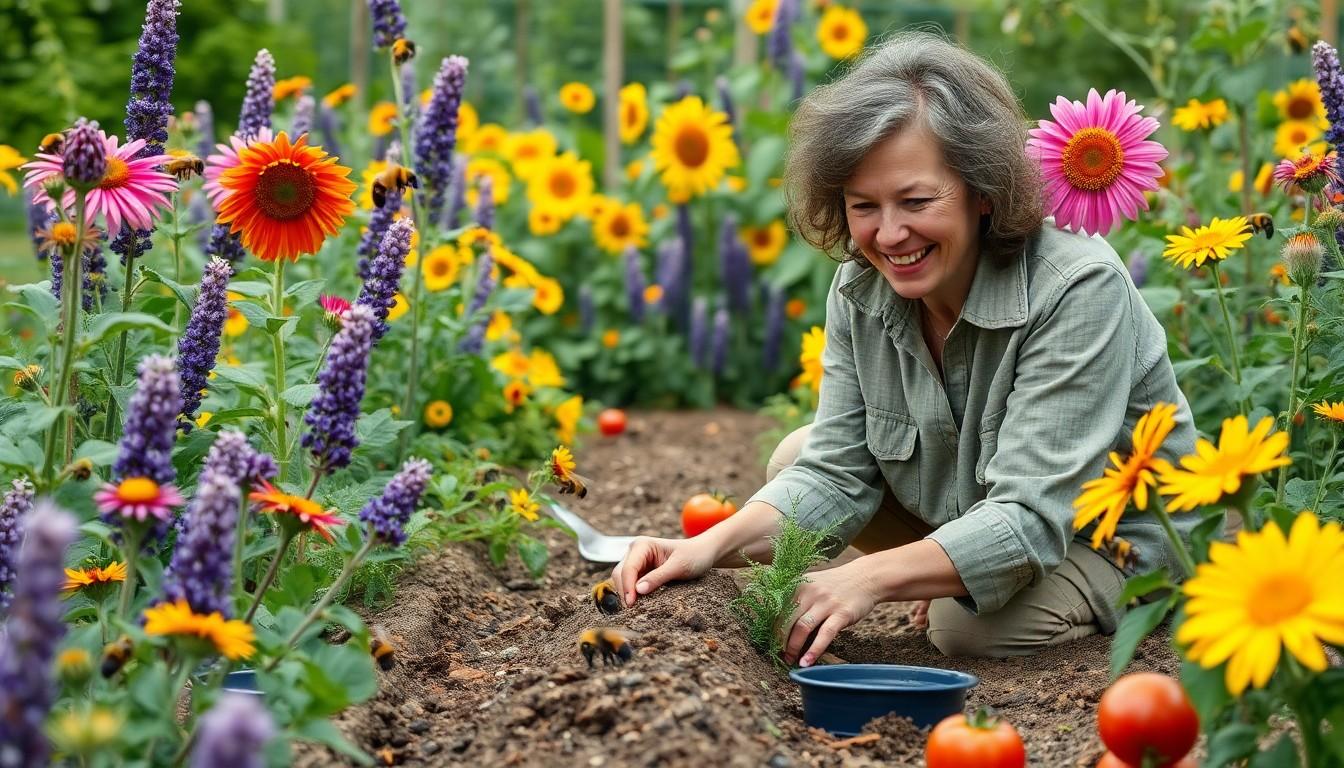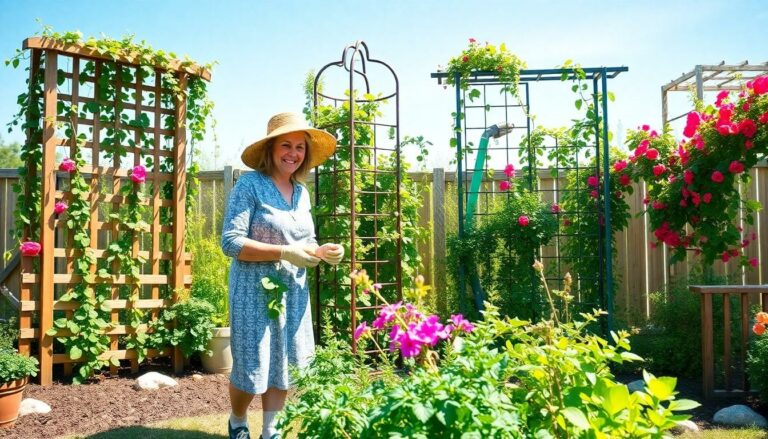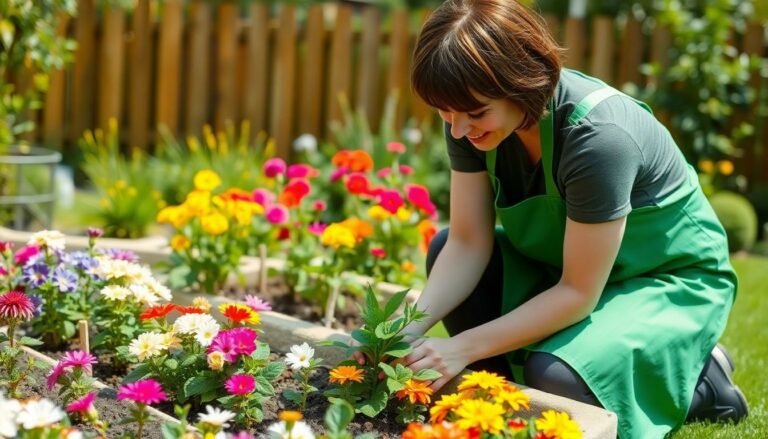In the buzzing world of gardening, bees are the unsung heroes that turn your veggie patch into a flourishing paradise. Without these tiny pollinators, your dreams of plump tomatoes and crisp cucumbers might just be wishful thinking. So why not roll out the red carpet for these furry friends? After all, who wouldn’t want to host a buzzing party in their backyard?
Importance of Bees in Vegetable Gardening
Bees serve essential functions in vegetable gardening. Pollination is the primary benefit they provide, enhancing the growth of many crops. Fruits and vegetables like zucchini, peppers, and strawberries rely heavily on bee activity for fruitful yields.
Consider the impact bees have on crop production. Studies show that approximately 70% of global crops benefit from pollinators, primarily bees. Increased bee populations contribute to higher yields, promoting successful harvests that gardeners can enjoy.
Protecting bees proves advantageous for environmental health as well. Biodiversity flourishes in gardens that attract bees, creating a balanced ecosystem. A diverse ecosystem fosters beneficial insects and birds, leading to natural pest control.
Creating a bee-friendly garden improves the resilience of local food systems. Gardens filled with blooming plants offer bees an ample food supply. This combination strengthens the resilience of vegetables as bees spread pollen among various species.
It’s vital to utilize native plants when attracting bees. Native flora typically requires less maintenance and provides the best resources for local bee populations. Choose a variety of flowers that bloom at different times throughout the seasons to support bees year-round.
Gardening efforts focused on attracting bees yield numerous benefits. Producing healthy vegetables becomes easier with the support of active pollinators. Encouraging bees to visit enhances the overall productivity of vegetable gardens.
Understanding Bee Behavior

Bees exhibit diverse behaviors that significantly influence vegetable gardens. Understanding these behaviors enhances the ability to attract them effectively.
Types of Bees
Honeybees and native bees serve as vital pollinators. Honeybees thrive in organized colonies, while native bees exist as solitary or social creatures. Bumblebees play a crucial role by pollinating various plants, particularly tomatoes and peppers. Mason bees excel in early spring, making them essential for early blooming crops. Leafcutter bees aid in pollination and plant health. Each type contributes uniquely to pollination, impacting the growth and yield of garden vegetables.
Pollination Process
Pollination involves the transfer of pollen from the male part of a flower to the female part. Bees collect nectar and pollen, facilitating this essential process. While seeking food, they inadvertently transport pollen between flowers. This action enables fertilization and promotes fruit and seed development. Successful pollination leads to increased vegetable production, benefiting various crops such as zucchinis and cucumbers. Understanding this process helps gardeners create environments that support and attract these essential pollinators.
Creating a Bee-Friendly Environment
Creating a welcoming space encourages bees to thrive in vegetable gardens. Several essential elements contribute to this environment.
Choosing the Right Plants
Selecting native flowering plants attracts bees effectively. Lavender, sunflowers, and coneflowers provide abundant nectar and pollen. Incorporating a variety of flowers blooms throughout the growing season enhances the appeal for different bee species. Consider grouping plants in clusters, making it easier for bees to gather resources. Avoid using pesticides, as chemicals harm bee populations and deter their presence. Prioritizing organic gardening practices fosters a healthier space for both plants and pollinators.
Providing Water Sources
Establishing water sources supports bees in garden environments. Shallow dishes filled with fresh water offer bees safe drinking spots. Adding pebbles or marbles helps prevent drowning, allowing bees to land easily. Regularly changing the water keeps it clean and appealing. Placing these water sources near flowering plants encourages frequent bee visits. Including diverse elements, like small water features or birdbaths, creates a dynamic environment that attracts and sustains bee populations.
Maintaining Your Vegetable Garden for Bees
An inviting vegetable garden supports bee populations and enhances vegetable growth. Maintaining it properly ensures continued attraction and health for these crucial pollinators.
Chemical-Free Gardening Practices
Implementing chemical-free gardening practices creates a safer environment for bees. Avoiding pesticides and herbicides protects their delicate systems and encourages frequent visits. Emphasizing organic fertilizers promotes soil health and boosts plant vitality. Incorporating companion planting naturally deters pests while providing nectar sources. These methods foster biodiversity which directly benefits bee populations.
Seasonal Considerations
Adjusting gardening practices seasonally keeps the garden appealing for bees year-round. Planting spring-flowering crops like peas and radishes supplies early nectar. Summer blooms such as sunflowers or coneflowers sustain them through hotter months. Allowing some plants to bolt creates a late-season food source for bees. Preparing native plants that flower in fall supports bees during their foraging challenges.
Other Strategies to Attract Bees
Creating a few focused areas in the garden can enhance bee attraction.
Designing a Bee Garden Area
Designing specific bee-friendly garden sections offers optimal benefits. Choose native plants that bloom at different times to provide a continuous food source. Cluster flowers to attract bees, as they prefer visiting multiple blooms in one area. Incorporate various flower shapes and sizes, as bees are attracted to different structures. Include taller plants that can serve as perches for resting bees. Setting up bee hotels or boxes provides nesting options, supporting solitary bee species. Maintaining a mix of colors in flower beds increases visibility for bees, encouraging frequent visits.
Companion Planting Techniques
Companion planting techniques elevate bee attraction significantly. Pairing flowering plants with vegetables enhances the pollination process. For instance, planting basil alongside tomatoes encourages healthy growth and draws in pollinators. Utilizing flowers such as marigolds interspersed among crops provides visual lure and keeps pests away. Mixing herbs like thyme and oregano boosts biodiversity and supports bee populations. Adding blooming cover crops during off-seasons feeds bees while improving soil quality. Spacing flower plants and vegetable crops equally caters to diverse bee species, ensuring a thriving ecosystem.
Conclusion
Attracting bees to a vegetable garden is a rewarding endeavor that enhances not just the garden’s productivity but also its overall health. By creating a bee-friendly environment through thoughtful plant selection and sustainable practices, gardeners can support these essential pollinators.
Implementing strategies like clustering flowers and providing diverse blooming options ensures bees have a steady food source throughout the seasons. This commitment to fostering bee populations not only leads to bountiful harvests but also contributes to a thriving ecosystem. Embracing these methods will result in a vibrant garden that benefits both the gardener and the environment.





